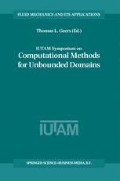Abstract
Wave based solutions of noise barrier geometries accurately model the complex direct, reflected and diffracted sound field interactions. However, typical boundary element and finite element approaches are limited to small geometries and lower frequency ranges because the solutions are very computer intensive and are thus not practical as a design tool. A new class of diffraction based methods, that include phase, are being applied that yield wave-like accuracy with trivial calculation times.
These results, however accurate, typically over-predict the actual performance of noise barriers, because non-homogeneous atmospheric effects such as wind, temperature gradients and turbulence have not been considered. To overcome this limitation, a combined diffraction based barrier model and a heuristic atmospheric model have been developed. Comparisons with the FFT and PE approach show close agreement. Application of this model yield the expected sound barrier performance degradation due to the acoustic medium non-homogeneity.
Access this chapter
Tax calculation will be finalised at checkout
Purchases are for personal use only
Preview
Unable to display preview. Download preview PDF.
References
Astley, R.J (1983) Wave envelope and infinite element elements for acoustical radiation, Int. J. Numerical Methods Fluids, 3, 507–526.
Cremers, L. und Fyfe, KR., (1995) On the use of variable order infinite wave envelope elements for acoustic radiation and scattering, J. Acoust. Soc. Am., 97 (4) 2028–2040.
Embleton, T. F. W., Thiessen, G. J., und Piercy, J. E., (1976) Propagation in an inversion and reflections at the ground, J. Acoust. Soc. Am., 59 278–282.
Daigle, G. A., (1982) Diffraction of sound by a noise barrier in the presence of atmospheric turbulence, J. Acoust. Soc. Am., 71847–854.
Fyfe, KR. und Harrison, C.C., (1995) Modeling of road noise and optimal barrier design,\ CMHC report #65851F039.
Gilbert, K. E., Raspet, R., und Di, X., (1990) Calculation of turbulence effects in an upward-refracting atmosphere, J. Acoust. Soc. Am., 87 2428–37.
Hayek, S., (1990) Mathematical modeling of absorbent highway noise barriers. AppL Acoust., 3177–100.
Hothersall, D.C. Chandler-Wilde, S.N. und Hajmirzae, M.N., (1991) Efficiency of single noise barriers. J. Sound Vib., 146 (2) 303–322.
Kurze, U. J. und Anderson, G. S., (1971) Sound attenuation by barriers, AppL Acoust., 4 35–53.
Lam, Y. W., (1994) Using Maekawa’s chart to calculate finite length barrier insertion loss, AppL Acoust., 42 29–40.
Lee, S. W., Bong, N., Richards, W. F. und Raspet, R., (1986) Impedance formulation of the fast-field program for acoustic wave propagation in the atmosphere. J. Acoust. Soc. Am., 79 628–34.
LEsperance, A., Herzog, P., Daigle, G. A. und Nicolas, J. R., (1992) Heuristic model for outdoor sound propagation based on an extension of the geometrical ray theory in the case of a linear sound speed profile, Applied Acoustics, 37 111–139.
Maekawa, Z., (1968) Noise reduction by screens, AppL Acoust., 1 157–173.
Muradali, A. und Fyfe, KR., (1997) A Study of 2D and 3D Barrier Insertion Loss Using Improved Diffraction Based Techniques, Accepted for publication in Applied Acoustics.
Pierce, A. D., (1974) Diffraction of sound around corners and over wide barriers. J. Acoust. Soc. Am., 55 941–955.
White, M. J. und Gilbert, K E., (1989) Application of the parabolic equation to the outdoor propagation of sound. Applied Acoustics, 27 227–38.
Author information
Authors and Affiliations
Editor information
Editors and Affiliations
Rights and permissions
Copyright information
© 1998 Springer Science+Business Media Dordrecht
About this chapter
Cite this chapter
Fyfe, K.R., Muradali, A. (1998). Wave vs. Geometric Based Modeling of Barriers with Atmospheric Effects. In: Geers, T.L. (eds) IUTAM Symposium on Computational Methods for Unbounded Domains. Fluid Mechanics and Its Applications, vol 49. Springer, Dordrecht. https://doi.org/10.1007/978-94-015-9095-2_12
Download citation
DOI: https://doi.org/10.1007/978-94-015-9095-2_12
Publisher Name: Springer, Dordrecht
Print ISBN: 978-90-481-5106-6
Online ISBN: 978-94-015-9095-2
eBook Packages: Springer Book Archive

